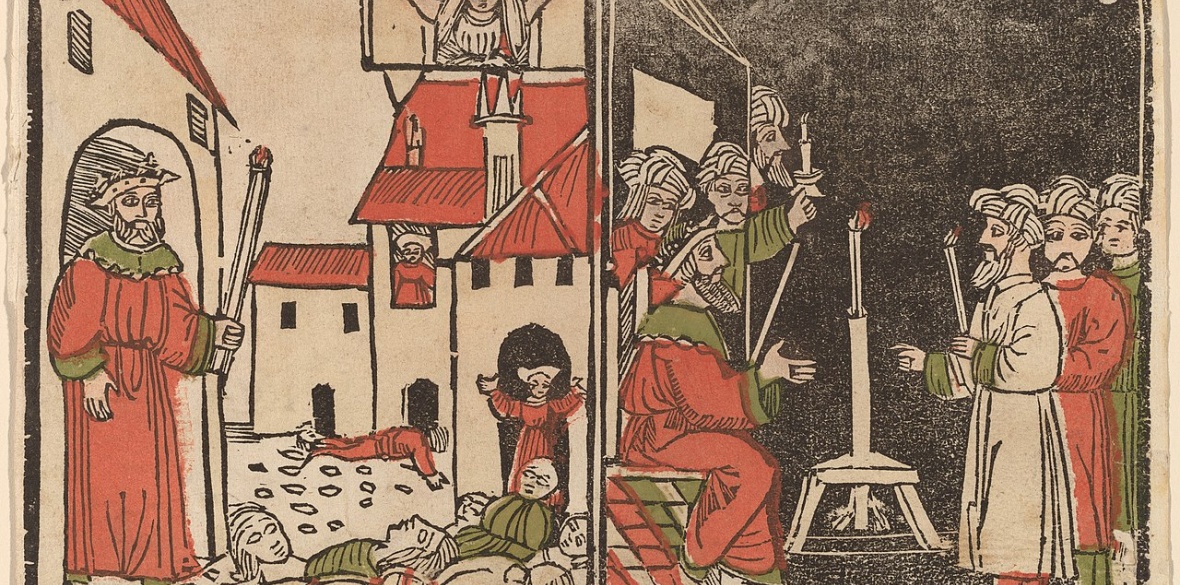This is the last article you can read this month
You can read more article this month
You can read more articles this month
Sorry your limit is up for this month
Reset on:
Please help support the Morning Star by subscribing here
SEVENTY years ago I started my education at Keble Memorial School in Harlesden in what we now call Brent, north-west London.
This was a Church of England (CoE) school that wouldn’t be taken into the control of the local authority until 1955.
The school took its name from John Keble, who also has an Oxford college named after him. Keble was a key church leader of the the Oxford Movement within the CoE in the early 1800s.
The Oxford Movement tried to make the CoE a much higher and more traditional Anglo Catholic body.
My school was very closely connected with St Matthew’s Church Harlesden, and every Tuesday morning we would be lined up in pairs and marched down to the church for a very high Anglo Catholic mass.
At that time St Matthew’s was a bit of a rebel church, rooted deep in the very Catholic — Anglo Catholic that is — Oxford Movement tradition.
This meant our mass would be sung in Latin from a beautiful, almost medieval, illustrated book with the music written on a medieval three-line stave.
Much later I discovered how rare this sung mass had become and that St Matthew’s was one of a handful of churches still clinging to this old rite of worship. It gave me a taste for unaccompanied sung church music that I still have today.
I wasn’t too convinced about the actual religious teachings, but as church attendance was compulsory I volunteered to be the thurifer, the altar server who waves and wafts the thurible.
I’m sure I don’t need to explain to the average Morning Star reader what a thurible is, but for those who don’t know a thurible is the fancy iron pot on chains containing burning charcoal and incense that is waved by the altar-boy to waft fragrant smoke over the congregation.
This still happens and I was amused to read recently that two thurifers in Spain had been arrested for replacing the usual incense in their thurible with some first-class cannabis gum.
Nobody in the very happy congregation seemed to complain about being wafted, but the local bishop got wind of what was happening (sorry) and called in the police.
Next door to my primary school was a vast Roman Catholic convent and girls’ school.
It was here I delivered crates of Guinness in my after-school job with the local Victoria Wine shop. I had one of those push bikes with a huge basket on the front.
The Convent of Jesus and Mary was universally known locally as the “Jam and Marmalade.” It gained some fame when ex-pupil Mary O’Malley wrote a successful comedic book called Once a Catholic. The book became a long-running play at the Royal Court Theatre in London in 1977 and then a film.
The associated Roman Catholic church in Harlesden had its own miraculous history. There is St Mary’s holy well fed from a spring. It and the associated shrine date from at least 1249.
A vision of Mary herself was seen in an oak tree in the churchyard. Her presence caused a spring to flow and the waters produced many cures, including for blindness.
The well was used until comparatively recent times, but then it was condemned as unsanitary and was covered over.
Reports from 1249 tell of a dark statue of the Virgin Mary, this became known as the Black Virgin of Willesden. It attracted huge numbers of visitors and pilgrims in search of healing from the statue or the health-giving well waters.
The black image of Mary was a centre of pilgrimage until the reformation in 1535 when the statue was torn down and taken to Chelsea and burned in public.
Despite the destruction of the statue, even without it Willesden’s shrine remained popular. This was bolstered when the Holy Trinity also made an appearance in the churchyard.
One local clergyman claimed he had a long conversation with Mary. Mary told him she wanted to be honoured at Willesden as she had been in the past.
In 1902 a new statue of Mary and Jesus was placed in the chancel, and in 1972 another new statue was made.
Today there isn’t much sign of the holy well or holy water. You will find a demijohn of the water in the church but nobody is telling the exact condition and location of the holy well.
What always impressed me about the CoE, as I moved towards atheism, was the number of plagues the supposedly kind and loving God was supposed to be ready to hurl down on her or his believers.
A packet of three was common — in plagues, as well as our first fumbling attempts at sinning. The trio of plagues were: pestilence, fire and flood.
The dictionary definition of pestilence was: “A contagious or infectious epidemic disease that is virulent and devastating.”
Now does that remind you of anything? Just watch the TV news for recent examples of flood and fire.
Other Biblical lists of plagues were far more numerous and far more all-embracing. The Old Testament offered us one of the best — the 10 plagues of Egypt.
Number one was water turned to blood. Next is a plague of frogs, closely followed by a plague of lice. At that time me and all my schoolmates would have a regular appointment with Nitty Nora — the nurse who hunted in our scalps for lice, nits and eggs.
Those were followed by a plague of flies. Number five was a plague on livestock, cows, sheep, goats — even donkeys, horses and camels would die.
We still had a few horses in Harlesden. One pulled the baker’s van. More common were police horses coming from their stables in Paddington along the ’Arra (Harrow) Road towards Wembley Stadium. We never saw camels. Perhaps the plague had got them.
Next plague, number five — and the one most feared by young boys like me — was boils. Lower standards of diet and hygiene meant we all knew about boils and the agony of Mum bursting them with cotton wool, boiling water and Dettol. Boils on the bum were feared worst of all.
Bad weather could always be relied on, long before we had even heard of climate change. Plague six was hail storms. Seven was locusts, not too common in Harlesden.
For the plague of darkness we had to wait until 1974 when Tory prime minister Ted Heath fired the first salvos in his party’s campaign to curb the industrial power of the miners. The three-day week was one of several measures he introduced at the time.
Ten years later, Thatcher was prime minister and in a full-scale war to crush the miners’ unions and shut down the British coal industry.
I haven’t much room to discuss Thatcher and it would get confusing to introduce somebody else who thought herself God.
The last and worst plague of all was the death of all firstborn children.
God was at least in favour of equality: “Every firstborn in the land of Egypt shall die, from the firstborn of Pharaoh who sits on his throne, even to the firstborn of the female servant who works the hand-mill, and all the firstborn of the animals.”
I could never understand why any supposedly loving god needed to put the fear of God into us to get us to believe and become good Christians.
It always seemed to me the equivalent of God telling us that unless we signed up as good Christians they would “send the boys round.”












